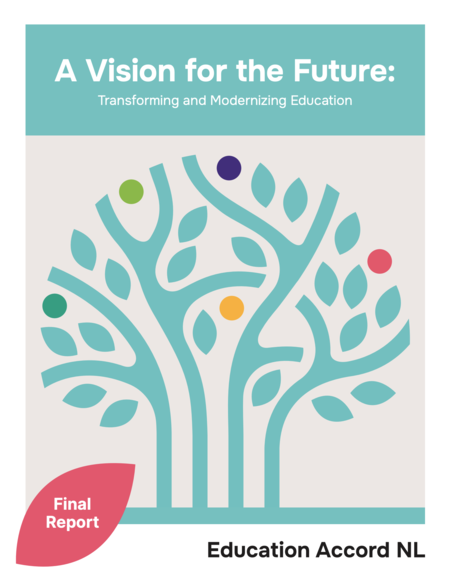The story has some irony: a report of more than 400 pages about education, which took a year and a half to be written in a province of Canada, has been uncovered with a crack difficult to repair. According to CBC News, the document contains a variety of false sources, from alleged academic articles to a film that never existed. The contradiction is striking: a text designed to guide schools and universities in times of AI, indicated precisely for an error that reminds of the “hallucinations” of the generative models themselves.
What has happened exactly. The document in question is titled ‘A Vision for The Future: Transforming and Modernizing Education’. It was presented at the end of August as a ten -year roadmap to transform public and university education into Terranova and Labrador. Its launch was accompanied by great expectations: to serve as a guide for the future of the education system in a province that seeks to adapt to the digital age and the challenges of artificial intelligence.
What was not expected is that, after its publication, it would be discovered that at least fifteen of its bibliographic references do not exist. We can find titles impossible to locate in academic databases and that, in some cases, seem copied to fictional examples used in style guides. This finding opened an immediate debate about the reliability of the report and on the supervision of the process that led to its writing.
Official reactions contained. The Department of Education recognized the existence of a small number of possible errors in the appointments and assured that they will be corrected in the online version. One of the co -author, Karen Goodnough, just pointed out in an email to the aforementioned medium that “references are being investigated and reviewed, without giving interviews with local media.

Today, however, access to the report itself has been complicated: the original link in which it was published no longer shows it and returns an error 404. It only remains visible in a filed copy.
Invented appointments. Among the most striking examples is the mention of an alleged 2008 film produced by the National Film Board, entitled ‘Schoolyard Games’. The agency itself confirmed that this work never existed. The reference, however, appears in the report with all the details of a real bibliographic record, as if it were a verifiable source.


The track led to discover something even more disturbing: the appointment matches word by word with an entry included in a university style guide used as a model to write bibliographies. That manual explicitly warns that many of its references are fictitious and are designed only as examples. Despite this, some ended up integrated in the final document as if they were authentic.


It is striking because the document not only speaks of AI, but also reserves a specific chapter: use it to customize the teaching, support teachers and simplify administrative processes, while driving competencies in AI, responsible practices and protection of privacy. In its “Calls to Transformion” it proposes to modernize the school system and prepare students for a digital environment where these technologies will be part of the day to day.

Was the generative used? The finding of false quotes opened another inevitable question: to what extent did artificial intelligence intervene in the preparation of the report? According to CBC News, some teachers fear that these references have been created with a language model, since these types of systems usually generate plausible titles that do not actually exist, but for now there are no conclusive evidence.
Images | Steven Binotto | Screen capture
In WorldOfSoftware | Jensen Huang, Bill Gates and other CEO are clear: the AI has opened the door to the three -day work week












